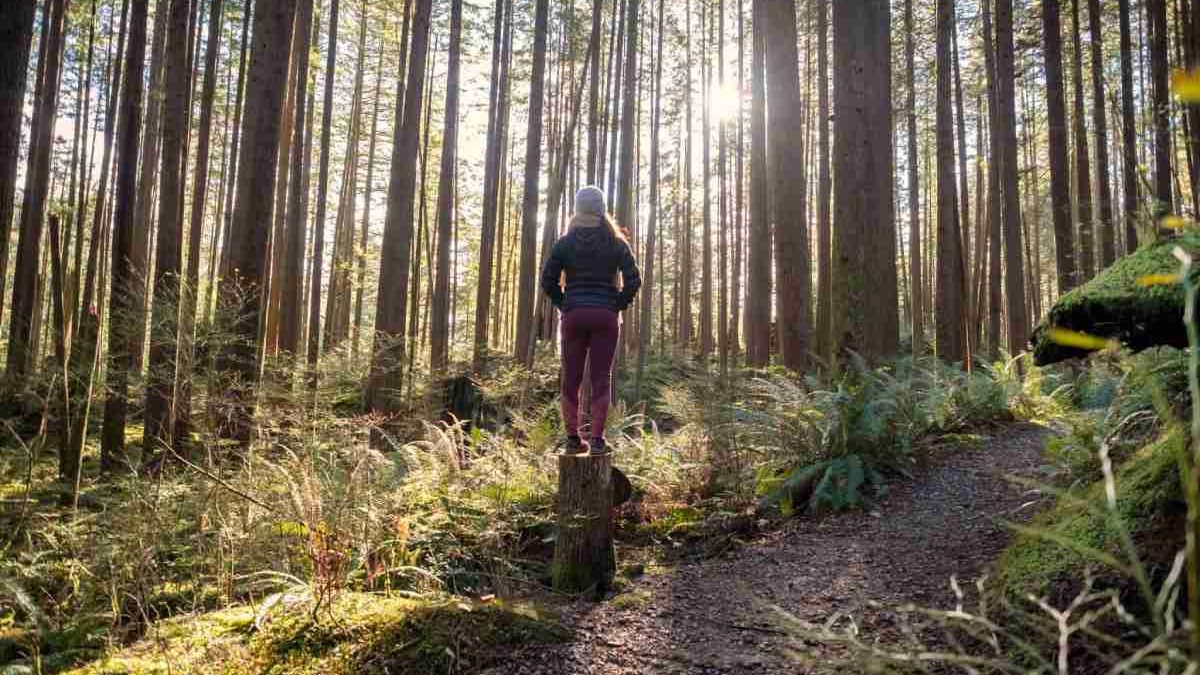Forest Bathing – In the bustle of life too fast-paced, finding peace and relaxation can be a challenge.
That’s where the Japanese practice of Shinrin-yoku, or forest bathing, comes in. This approach to wellness, born during the 1980s, is about immersing yourself in the natural environment and soaking everything it has to offer.
If you’re less a fan of nature and more of a Blackjack player, check out the link to get a chance to be part of the leaderboards!
Table of Contents
What is Forest Bathing?
Forest bathing is a simple practice. It has less to do with literal bathing in rivers, rather it involves walking slowly through the woods and taking in the sights, sounds, and smells.
Unlike hiking or jogging, the goal isn’t physical exercise but mental and emotional rejuvenation. It’s about being present in the moment and connecting with it on a deeper level.
The Healing Power of Mother Nature
But why is this so special? Scientists have started uncovering the benefits of spending time among trees. Being amongst them can reduce stress, anxiety, and depression.
Studies have shown that it can also lower heart rate and blood pressure, reduce stress hormone production, and even boost the immune system.
This is due to phytoncides, natural oils plants create to protect themselves from germs and insects. They also happen to benefit humans.
Practicing Anywhere
If you’re thinking about how to re-create this without access to the woods, the good news is you can practice elements of this in any natural setting. A park, garden, or any green space can be your sanctuary. The key is to be present and observe it with all your senses.
A Step-by-Step Guide
- Find Your Haven: Choose a natural area that feels safe and inviting. It doesn’t have to be large or remote. Even a small patch of greenery can work.
- Leave Distractions Behind: Turn off your phone or camera. While it’s tempting to want to capture its beauty, taking photos can disrupt your connection with the moment.
- Slow Down: Go slowly and deliberately. There’s no rush or destination. The goal is to be present in the moment.
- Use Your Senses: Focus on what you see, hear, smell, and feel. Notice the colors of the leaves, the chirps of the birds, and the scent of the soil.
- Breathe Deeply: Take deep breaths. Inhale the fresh air and phytoncides.
- Sit and Observe: Find a comfortable spot to sit and observe your surroundings. Let your thoughts flow.
- Reflect: Afterwards, spend a few minutes reflecting on your experience. How do you feel? What did you notice?
Tips for Optimization
Consider these tips when trying them out. Choose the right time – early morning or late afternoon can be particularly serene. Dress comfortably and according to the weather, ensuring you can move freely and sit comfortably. If possible, go alone or with a small group to maintain a peaceful environment.
Remember to stay hydrated, but avoid bringing snacks as eating can distract from the meditative aspect. By following these tips, you allow for deeper relaxation and a more profound feeling.
Around the World
This trend is gaining popularity worldwide. Many countries are adopting this practice and adapting it to their local styles.
Cultural Variations
Different cultures have varying versions of this practice. In Scandinavia, the concept of ‘friluftsliv’ or open-air living means the importance of spending time outdoors. In these regions, activities such as hiking, fishing, and even simple picnics are cultural practices.
Connection to Traditional Healing Practices
The concept, while modern in its current form, also shares roots with ancient traditions from around the world. Many indigenous cultures have long recognized the healing powers of the earth.
North American natives have spiritual, mental, and physical restorations guided by it. In some African and South American tribes, it plays a central role in rituals and medicines.
The Role in Modern Healthcare
Interestingly, this is starting to find its way into modern healthcare practices. Some doctors and therapists are recognizing the therapeutic benefits of nature.
In Japan, there are designated therapeutic forests where people are guided through their bathing. They are often paired with mindfulness exercises. This helps people reduce stress, cope with anxiety, and improve their mental health.
Environmental Impact
This topic also brings to light important conversations about environmental conservation and sustainability. Engaging with it respectfully and mindfully is crucial.
This means leaving no trace, respecting wildlife, and supporting conservation efforts. Promoting these practices not only benefits the individual but also preserves the greenery for future generations.
A Final Thought
This method of self-care offers a much-needed respite. It reminds us of the healing power of being outdoors and the importance of taking time to recharge.
Take a page from their book and remember to step into a green space the next time you feel overwhelmed.


